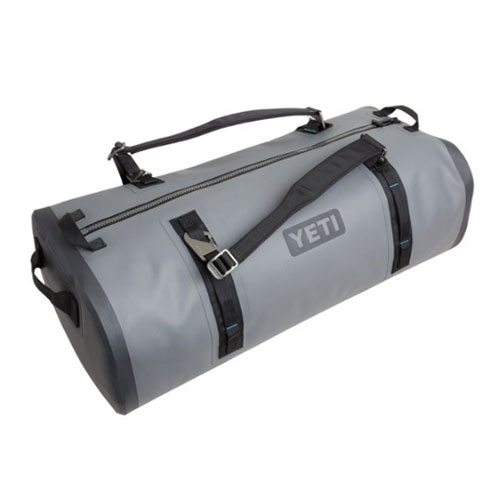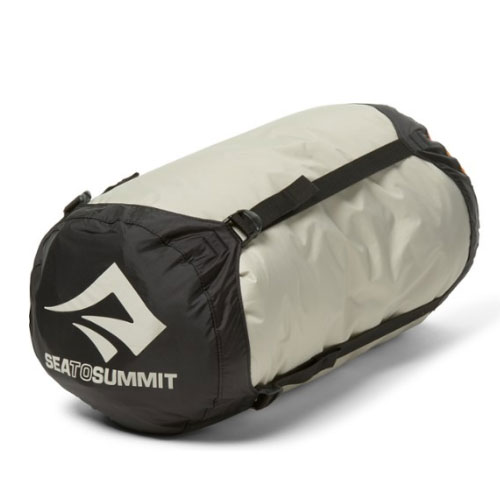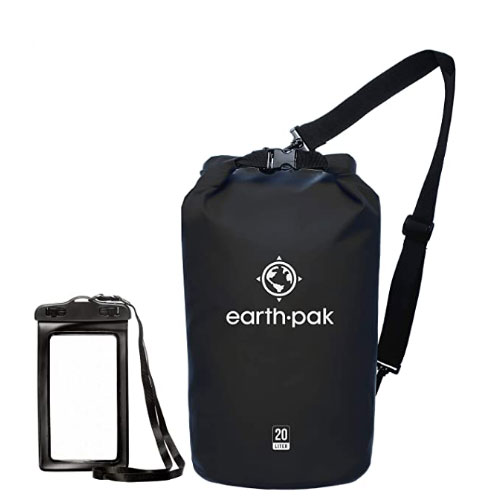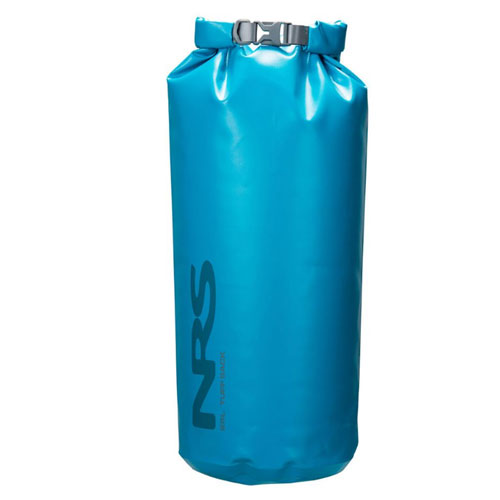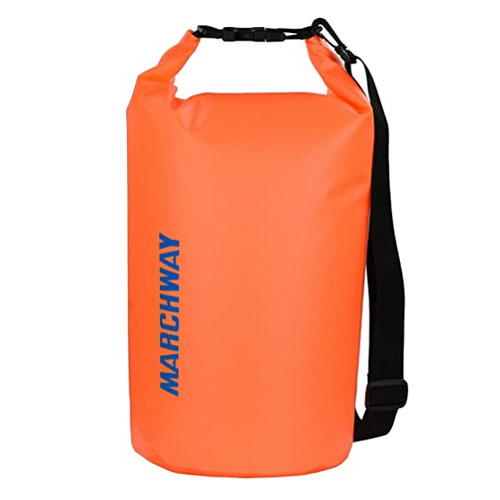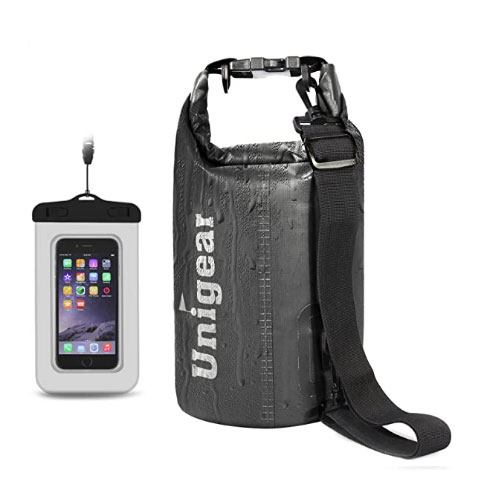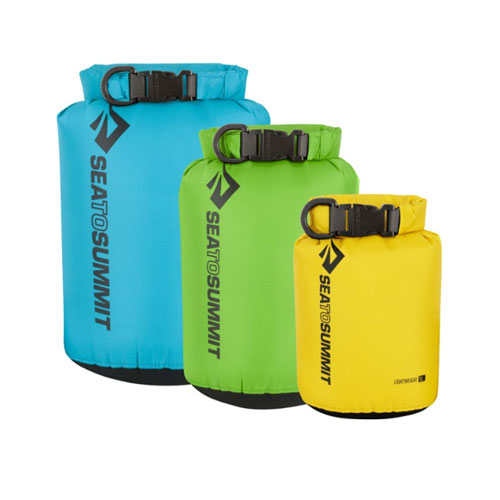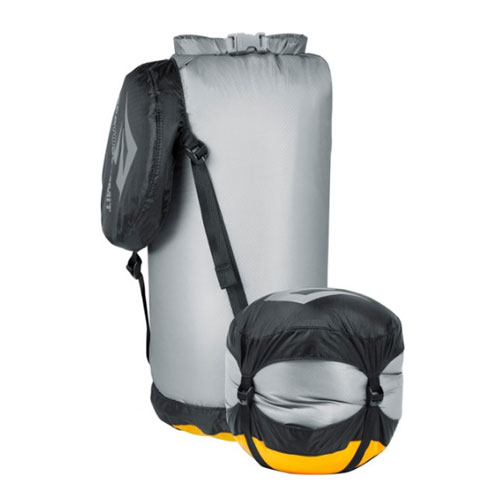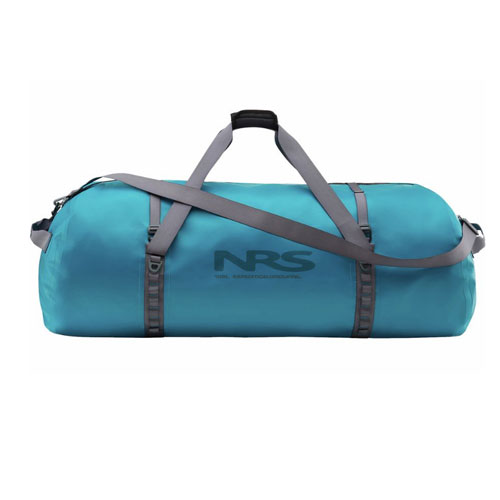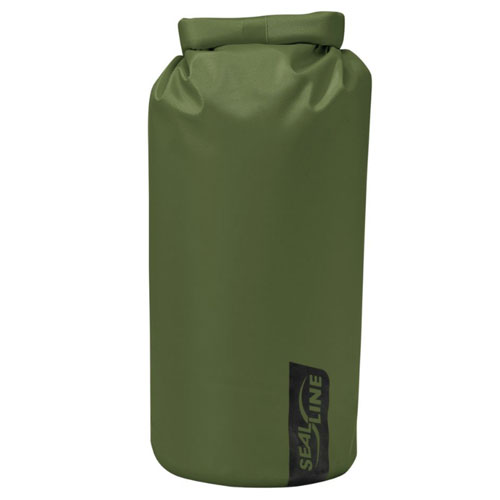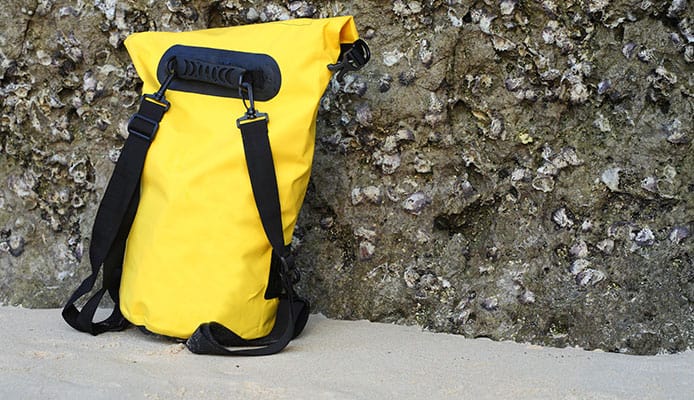
-
1.
-
2.
-
3.
-
4.
-
5.
Whenever you’re enjoying watersports or embarking on any outdoor adventure where your gear is likely to get wet, a dry bag is the best way to keep your belongings secure and dry. Since you will be depending on it to protect your valuables, only the best dry bag will do.
For it to serve you well, it should be waterproof and resistant to tearing and puncturing. To help you find a reliable dry bag you can count on, the reviews below break down the 10 best dry bags on the market while the buying guide goes into more details on how to pick a dry bag for your needs.
OUR TOP PICK
YETI Panga 100 Duffel Dry Bag
- Stand Out Features - Why We Love It
- Best dry duffel for multi-day paddling and camping trips
- A whopping 100 liters capacity accommodates plenty of gear
- Fully waterproof and able to withstand submersion
- A zipper closure system for ease of packing and unpacking
- Backpack straps and six lash points for ease of handling
- Two convenient mesh pockets on the outside
- Rugged nylon shell, zipper, and EVA molded base
Capacity: 100 Liters, 6,102 cu. in.
Material: Nylon and EVA
Closure System: Zipper
Dimensions: 32.5 x 17 x 12 inches
Weight: 6.8 pounds
EDITORS CHOICE
Sea to Summit eVent Compression Dry Bag
- Stand Out Features - Why We Love It
- Best backpacking dry bags for compressing gear
- Waterproof PU coated fabric, roll-top closure, and sealed seams
- Four compression straps for compressing and securing the load
- Air-permeable bottom lets out air without letting in water
- 70D nylon fabric and reinforced stitching to resist wear and tear on the trails
Capacity: 6, 10, 14, 20, 30 Liters (366 to 1,831 cubic inches)
Materials: PU-coated 70D Nylon Body, 40D Nylon Base
Closure System: Roll-top
Dimensions: 6 x 14 to 10.5 x 23 inches
Weight: 3.7 to 7.4 ounces
BEST VALUE
Earth Pak Waterproof Roll Top Compression
- Stand Out Features - Why We Love It
- Best dry bag for kayaking in terms of value for money
- Rubberized material and roll-down top seal out water
- Shoulder, backpack, and sternum straps for ease of carrying
- IPX8 waterproof and touch-friendly 6.5-inch phone case
- Strong clips for attaching the bag to a watercraft
- Rugged rubber-like fabric doesn't tear or puncture easily
Capacity: 10, 20, 30, 40, or 55 Liters
Material: Rubber-Like
Closure System: Roll-Top
Dimensions: 8 x 8 x 15 to 11 x 11 x 20 inches
- Stand Out Features - Why We Love It
- Best dry bag kayak for extreme adventures
- PVC/polyester fabric is waterproof and puncture-resistant
- Roll-top closure and buckle provides a watertight seal
- Extremely durable construction backed by a lifetime warranty
- Compression dry sack capable of compressing gear
Capacity: 5, 10, 15, 25, 35, 45 and 55 Liters
Material: PVC Polyester
Closure System: Roll-top
Dimensions: 6.5 x 9.5 to 12.5 x 27.25 inches
Weight: 0.4 to 1.6 pounds
MARCHWAY Floating Heavy Duty
- Stand Out Features - Why We Love It
- Best ultra-durable dry bag for water and outdoor sports
- Waterproof tarpaulin fabric and watertight roll-down top
- Shoulder or backpack straps provide carrying comfort
- Versatile, high-visibility, and easy to use dry bag
- Rugged 500D fabric is extremely resistant to rips and punctures
Capacity: 5, 10, 20, 30 and 40 Liters
Fabric: 500D Tarpaulin
Closure System: Roll Top
Dimensions: 6.9 x 15 to 11.9 x 26 inches
Weight: 0.53 to 1.63 pounds
Unigear Lightweight and Floating Waterproof Dry Bag
- Stand Out Features - Why We Love It
- Best floating dry bag for hiking and watersports
- Waterproof PVC fabric, welded seams, and roll-top closure
- Durable 500D material and reinforced buckle and D-rings
- Shoulder and backpack straps provide an easy carrying experience
- Comes with dust, snow, and waterproof phone case
Capacity: 2L,5L, 10L, 20L,30L, 40L
Material: 500D PVC
Closure System: Roll-top
Dimensions: 28 x 19 to 47 x 70 inches
- Stand Out Features - Why We Love It
- Best dry bags for kayaking, hiking, and backpacking
- Compact dry bags stow easily in tight spaces
- Waterproof PU coated material, roll-top closure, and taped seams
- Set of three dry bags in three different sizes
- D-ring attachment points on the buckles
Capacity: 1, 2, 4 Liters ( 64 to 244 cubic inches
Fabric: PU-coated 70D Nylon
Closure System: Roll-Top
Dimensions: 4 x 9, 5 x 10, 6 x 12 inches
Weight: 1.1, 1.3, and 1.6 ounces
- Stand Out Features - Why We Love It
- Best ultralight compression dry bag
- Ability to compress gear to a third of the original size
- Waterproof siliconized fabric, roll-top closure, and fully taped seams
- Rugged 30D Cordura nylon fabric and double-stitched seams
- The air-permeable base makes it easy to compress gear
- Three compression straps maintain the compressed size
Capacity: 6 to 28 liters, 366 to 1,221 cubic inches
Material: Siliconized 30D Cordura nylon
Closure System: Roll-Top
Dimensions: 6 x 14 to 9 x 20 inches
Weight: 2.3 to 3.4 ounces
- Stand Out Features - Why We Love It
- Best ultra-tough dry bag for extreme adventures
- Best waterproof roll-top closure with dual sealing strips
- Ultra-tough fabric can hold up to the toughest beatings
- Welded seams enhance durability and waterproofing
- D-ring makes it easy to secure the dry bag to your watercraft
Volume: 5L, 10L, 20L, 30L, 40L, 55L (280 to 3310 cu in)
Material: 1000D Vinyl-Coated Polyester
Closure System: DrySeal Roll-top
Dimensions: 7 x 8 to 13 x 25 inches
Weight: 7 to 28 ounces
How To Choose The Best Dry Bag – Buying Guide
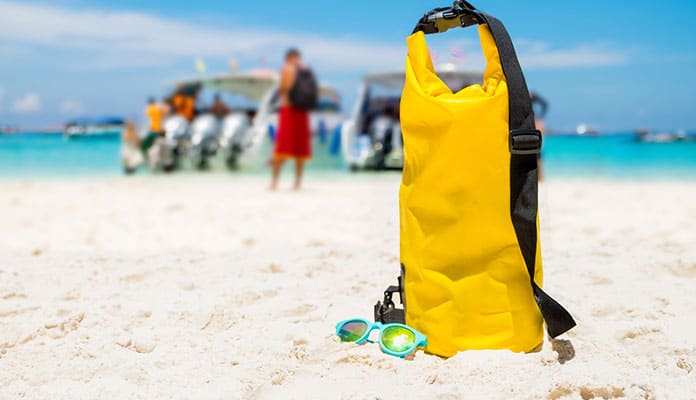
Waterproof Performance
To function as they are supposed to, dry bags have to be completely waterproof. Not only should the fabric they are made of being waterproof, but the seams and top opening should also be watertight as well.
The best dry sacks feature waterproof siliconized or polyurethane coatings that are completely impervious to water, roll-top closures or waterproof zippers, and fully taped or welded seams.
Some dry bags waterproof can float in the water, which will be useful if you’re going on a wild water adventure, or if the dry bag is accidentally submerged.
Durability
There is little use in having the most watertight bag in the world if it will get torn or punctured if it happens to come into contact with a thorn or a sharp rock. Not only do the best dry bags have to be strong enough to stop water from entering, but they also need to be strong enough to withstand the bumps and scrapes that happen when you’re outdoors.
The best dry sacks are made of abrasion and puncture-resistant materials with heavy denier ratings. Besides, heavy-duty waterproof bags have welded seams and reinforcements in the areas of weakness such as the seams. This is the type of dry bag you can count on not to let you down when you need it the most.
Convenient Features
While the craftsmanship has to be of a high standard, the different features on the best dry bags are also a critical factor when deciding what waterproof bag best suits your needs. For example, if you’re going backpacking or hiking and need the best waterproof bag best for keeping your sleeping gear dry, compression dry sacks are the best backpacking dry bags for this purpose.
Pockets and D-rings give you a convenient way to keep items you need handy. Some dry bags have splash-proof pockets on the front for those easy to reach items that don’t need full water protection. Others have mesh pockets on the front for quickly storing items that might already be wet.
Some of the best dry bags kayaking comes with a waterproof phone case. Other features such as reflective strips can be useful extras to keep you visible in the water.
How You Will You Carry and Transport It
Even with the most efficient dry bags for kayaking or boating, you will still have to carry the dry bag to and from your watercraft. The carry straps dry sacks come equipped with generally depend on how large the dry bag is.
The smaller dry bags usually have one shoulder strap while the larger waterproof dry bag backpack options usually come with two padded straps so you can carry them backpack style. If you’re looking to take your dry sack on a raft, look for a dry bag with points for tying or clipping the dry bag in place.
You might also like: Waterproof Duffel Bags
The Capacity the Dry Bag Will Hold
There are dry bags as small as 2 liters and as large as 100 liters. What capacity will serve you best comes down to the amount of gear you will need to be protected. Choose a capacity that’s big enough to hold everything you need kept dry and secure.
Something like a 3 or 5-liter dry bag can be ideal if you’re only looking for the best waterproof dry bag for a handful of items. 20 to 30 liter dry bags are great for day, overnight, and weekend trips. On the higher end of the spectrum, a 40+ liter waterproof bag travel is designed to accommodate gear for multi-day adventures.
Keep in mind that dry bags with a roll-top closure offer less storage space than the stated capacity. This is because you have to leave an allowance for rolling down the top 3 to 5 times. The smartest thing to do, therefore, is to err on the side of caution and go on the larger side when choosing your dry bag.
Color
While color may not seem like an important consideration when selecting a dry bag, the color you choose can have some implications when out there. The darker the dry bag, the hotter it will get if you’re going to a hot climate.
Thinking about getting a camouflage waterproof dry bag? Well, just remember that if you lose it in the water or anywhere else, you want to make sure you’re able to find it. A bright hue, on the other hand, can help you remain visible on the water.
There is also the element of style. We all want to look good when out and about. Thankfully the materials these dry bags are made to allow them to be made in any color so you are sure to find a color you will love.
FAQs
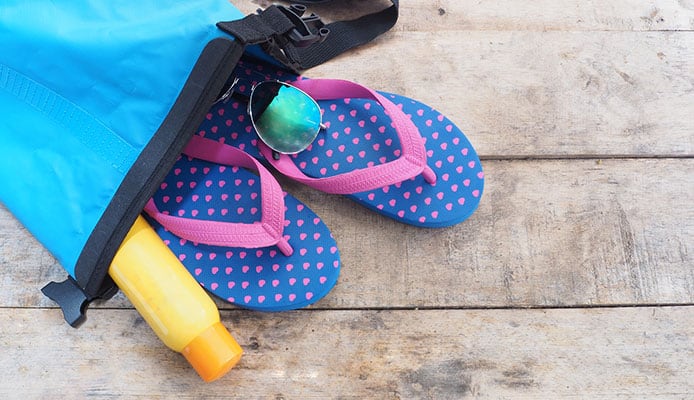
Q: Are Dry Bags Really Waterproof?
Dry bags can withstand splashes, rain, and short-lived submersion. They are made of waterproofed materials such as PVC and PU coated or siliconized nylon, feature waterproof zippers or roll-down closures, and taped or sealed seams.
Q: Do Dry Bags Work?
Dry bags are effective at keeping gear secure and dry. The combination of waterproof fabrics, roll-top closures or waterproof zippers, and taped or welded seams work to ensure no water can get in. Such a dry bag can keep your valuables dry even in the event of accidental submersion.
Q: What Size Dry Bag Do I Need?
For most trips, a 20-liter dry bag is sufficient. Dry bags less than 5 liters in capacity are good for keeping essentials such as phone and snacks dry, whiles one that's less than 10 liters can hold a sleeping bag. If you will be embarking on multi-day trips, you will need a 30+ dry bag to accommodate everything you will need.
Q: How do you remove mildew from a dry bag?
Mildew is a fungus which not only is unpleasant to look at but can also cause respiratory problems as well as links to allergies, nervous system disorders and depression. Therefore, it’s vitally important that it is removed at the first sign.
You’ll want to make sure you use warm water, but avoid any temptation to kill it with water near boiling temperature as this could damage the seams on your dry bag. Non-detergent soap should be more than enough to do the trick, but salt and lemon juice can be applied for a more effective solution. Again, don’t put it in the dryer as the heat could damage the dry bag, but let it dry naturally.
Globo Surf Overview
A dry bag is a great item not just when you’re on the water. You can use it as a regular camping rucksack to protect delicate gear such as sleeping bags when it’s raining or snowing.
The best dry bag kayaking or best backpacking dry bag should be made of tough and waterproofed fabric, feature a watertight roll-top or zipper closure, and have sealed seams. All the top rated dry bags featured in the dry bag reviews above fulfill these criteria.
More Watergear Water Protection Reviews:
- Waterproof Duct Tapes
- Waterproof Wallets
- Waterproof Phone Cases
- Waterproofing Sprays
- Travel Umbrellas
- Underwater Camera Housings
- Waterproof Cast Covers


